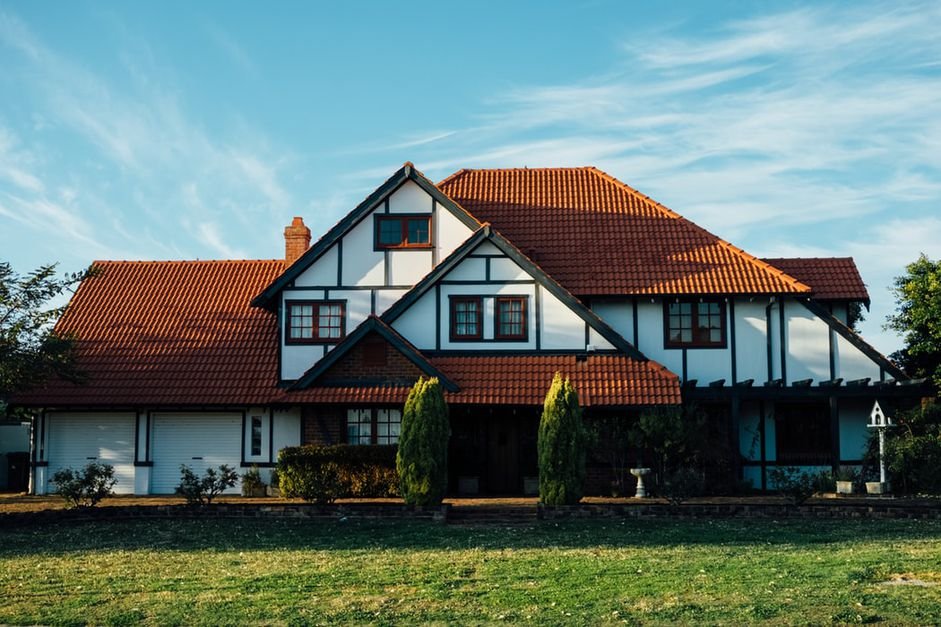Design Essentials | Tudor
A storybook gabled cottage in the English countryside; a crackling fire inside an inviting stone hearth; and iconic, rich timber beams that line the inside and outside of these cozy abodes. Tudor design, a home style from centuries past, is at once unique and inviting, cozy and off-the-beaten path. Today we explore the design and architecture essentials that make up a Tudor home, and how you can recreate this look in your modern residence.
ARCHITECTURE
The architecture and construction of a Tudor home is undoubtedly its most iconic feature. Tudor architecture first sprang up in the period between 1485 to 1558, when craftsmen built sophisticated two-toned manor homes with a combination of Renaissance and Gothic design elements. Centuries later, in the United States, this age-old design style was revived, and a number of homes built here between 1890 and 1940 were based on this old world style.
Half-timber details
Reminiscent of a countryside cottage, even when used in a city home, what was once structural timbering in medieval homes has become decorative half-timbering, where the frame of the modern Tudor home is outlined in rich wood to mimic its age-old counterpart. These exteriors create a unique sense of contrast, as the siding itself is often painted a bright neutral against the dark, natural wood of the beams.
Roof + Gables
Tudor homes are well-renowned for their steeply pitched roofs and front-facing gables, often featuring multiple stacked gables of asymmetrical size and placement on the home. Unique details in the roofing such as dormer windows, and gable details such as parapets or bargeboards, give these homes a sophisticated and antique look.
Varied Materials
Classic Tudor homes feature stucco exterior walls, or were sometimes weatherboarded or shingled. More ornate old Tudor homes were sided with stone and included decorative stone trim. The most prevalent building material for American Tudors was brick, frequently laid out in an elaborate pattern on the first story with a second story consisting of stucco or wood and classic false half-timbering.
Casement Windows
Although some Tudor homes feature double-hung windows, they almost always have at least one set of casement windows, which are clustered together in groups of three or more and typically consist of tall, narrow panes. Truly authentic Tudor houses usually feature at least one set of leaded glass windows, in which metal casings hold together the individual panes. Stone mullions often separate casements.
Unique Entrances
From solid doors made from board and batten wood with luxurious black metal hardware, to intricate concrete or stone arches and recessed entrances with pitched roofs, Tudor entrances are meant to be as detailed and grand as they are inviting.
INTERIORS
Tudor interiors, traditional and contemporary, are filled with warmth and natural design that brings to mind firelight dinners and a roaring hearth. Neutral or dark and regal color palettes, ample use of real wood, stone, and other materials, and sophisticated use of handmade decor such as tapestries make these homes loving fortresses against the cold.
Wood-hewn Design
Like their exteriors, the interiors of Tudor homes prominently feature timber half-beams and trim outlining the roof and inside walls. In addition, many Tudor homes feature rich oak paneling in many if not all rooms, and gravitate towards solid wood furnishings that can stand the test of time.
Rich Textiles
Hanging antique tapestries are a prominent motif in old Tudor homes, but even modern Tudor Revival homes feature carefully-selected drapery, bedding, and other textiles in a variety of warm and high-end fabrics such as velvet, damask, and brocade. When furnishing a Tudor home, the goal is to achieve a luxury yet comforting interior.
The Heart of Home
The centerpiece in every Tudor home is a timeless built-in fireplace. From its uniquely shaped Tudor chimney to the plasterwork and stone hearth at its base, these fireplaces are designed and furnished with great care and attention. The placement of these fireplaces is also important, as they provide meaningful focal points in a typically asymmetrical home.













